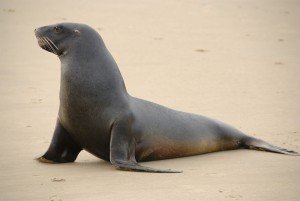The discovery of an extinct sea lion from the Chatham Islands has researchers concerned that modern levels of by-catch could drive the remaining local species extinct.
 University of Otago scientists identified the extinct Chatham Island sea lion and found it was genetically distinct from the modern population that lives in the Auckland and Campbell Islands and mainland New Zealand.
University of Otago scientists identified the extinct Chatham Island sea lion and found it was genetically distinct from the modern population that lives in the Auckland and Campbell Islands and mainland New Zealand.
Dr Nic Rawlence, from the university’s Department of Zoology, said the Chathams supported a “large, genetically diverse population of this unique sea lion, which went rapidly extinct around 1650 AD, following Polynesian settlement of the islands only 200 years earlier”.
The researchers used computational modelling to work out what level of human hunting was likely to have caused the Chathams sea lion extinction. Their findings, published in Molecular Ecology, showed hunting rates greater than one sea lion per person per year were enough to cause extinction within 200 years of first human settlement.
Professor Jon Waters said the findings had implications for the survival of modern sea lions. Similar models for modern sea lions suggested that current reported and unreported by-catch levels could be unsustainable for the long-term survival of the species.
“What our research shows is that human harvesting and sea lions do not mix,” said Dr Rawlence. “Unless measures are taken to mitigate continuing by-catch levels, the outlook for our sea lions is bleak.”
The findings from the Marsden-funded research was reported by New Zealand media:
Radio NZ: Extinct sea lion discovery raises by-catch fears
Otago Daily Times: Research reveals threat to sea lion survival
New Zealand Herald: Study raises fear for sea lions
TVNZ: Extinct Chatham Islands sea lions a warning to their modern cousin – study